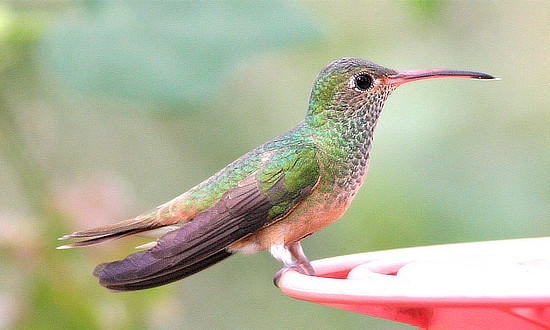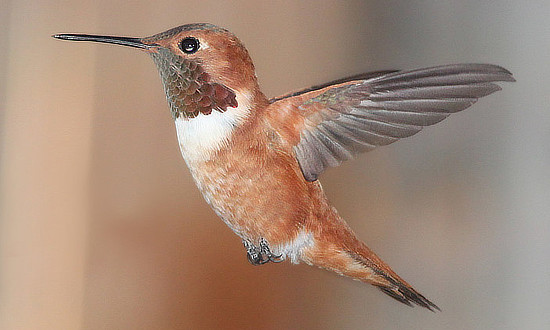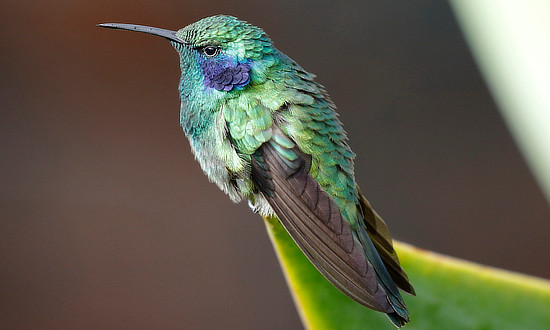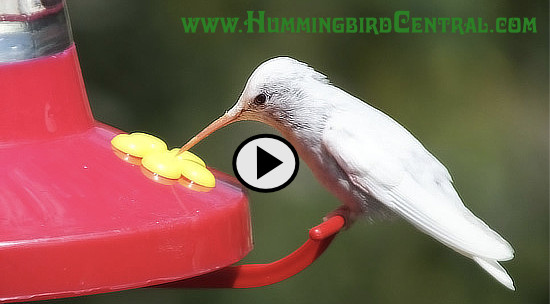Hummingbirds of the World
Hummingbirds are found only in the Western Hemisphere, with almost half the species living in the "equatorial belt" between 10 degrees north and south of the equator. According to the International Ornithologists' Union (IOU), the hummingbird family has 366 species and 112 genera, mostly south of the United States. Hummingbirds comprise the family Trochilidae, among the smallest of birds, with most species measuring in the 3"-5" range.
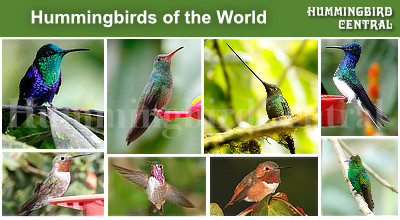 |
These tiny New World creatures are called "hummingbirds" due to the "humming" sound created by beating their wings, which flap at high frequencies audible to other birds as well as humans.
Various species of hummingbirds can be found in these areas of the Americas:
Hummingbirds are not found in Europe, Asia, Australia, Africa, or Antarctica.
Many hummingbirds spend the winter in Central America or Mexico, and migrate north to their breeding grounds in the southern United States as early as February, and to areas further north later in the spring. The first arrivals in spring are usually males. Other species are permanent residents of Central America and South America.
Hummingbird Species Commonly Seen in the United States
Fewer than two dozen species venture into the United States and Canada, and only a few species remain year-round in North America.
Hummingbirds of Canada
Many hummingbirds spend the winter in Central America or Mexico, and migrate north to their breeding grounds in the southern United States as early as February, and to areas further north into several Canadian provinces, later in the spring.
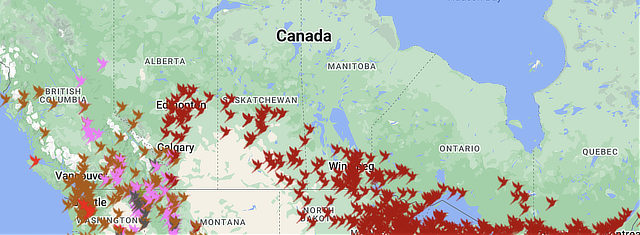 Map showing the migration of hummingbirds into Canada |
Hummingbirds will be seen in British Columbia, Alberta, Saskatchewan, Manitoba, Ontario, Quebec, Nova Scotia and New Brunswick.
There are only five species that venture into Canada on a regular basis, listed below.
Hummingbird Species in Mexico
Mexico is home to about 59 species of hummingbirds, shown in the list below. Some hummingbirds in Mexico do not migrate, while others like the Ruby-throated Hummingbird, Black-chinned Hummingbird and other species do migrate north into the United States and Canada in warmer months.
|
|
Mexico and Central America: A Hummingbird Haven
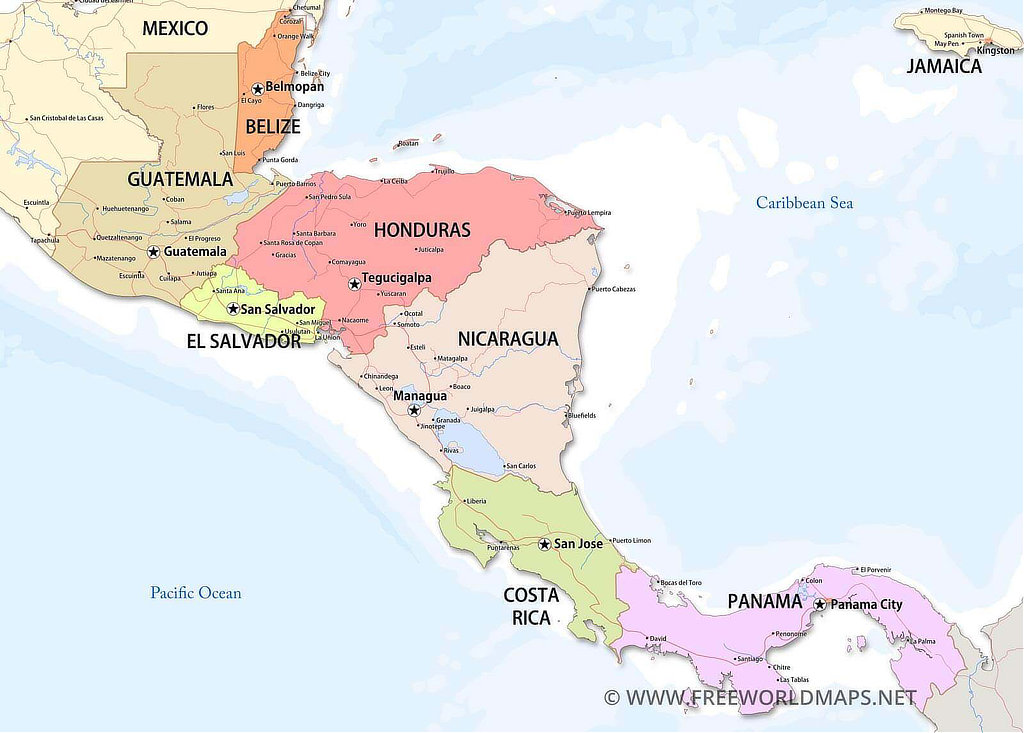 |
| Map courtesy of www.FreeWorldMaps.net |
Hummingbird Species in Central American Countries
| Country | Number of Species | Read More |
| Guatemala | 39 | Hummingbirds of Guatemala |
| Belize | 26 | Hummingbirds of Belize |
| Honduras | 42 | Hummingbirds of Honduras |
| El Salvador | 23 | Hummingbirds of El Salvador |
| Nicaragua | 34 | Hummingbirds of Nicaragua |
| Costa Rica | 54 | Hummingbirds of Costa Rica |
| Panama | 59 | Hummingbirds of Panama |
Photo Highlights of Hummingbird Species in Central America
Booted-racket Tail |
Fiery-throated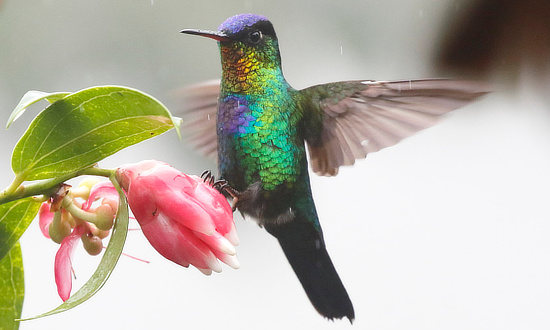 |
Cinnamon |
|
Coppery-headed Emerald |
Chestnut-breasted Coronet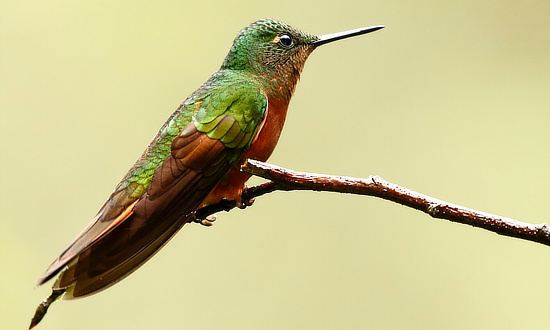 |
Buff-tailed Coronet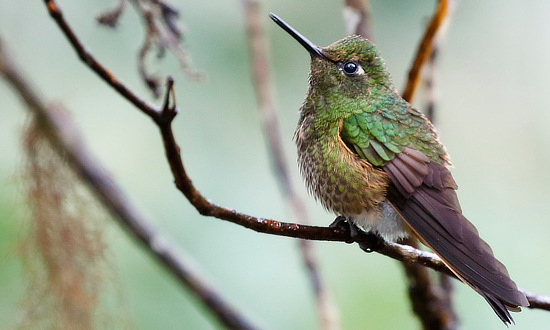 |
|
Green-breasted Mango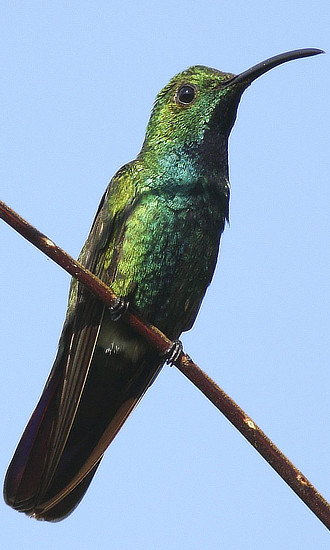 |
White-necked Jacobin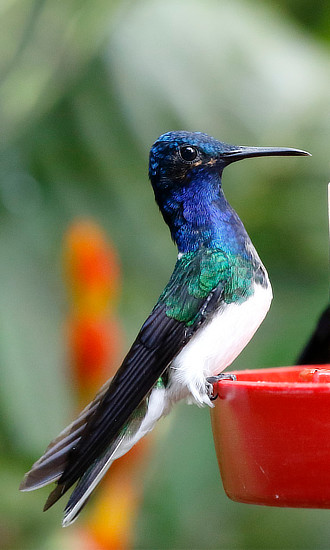 |
Mexican Violetear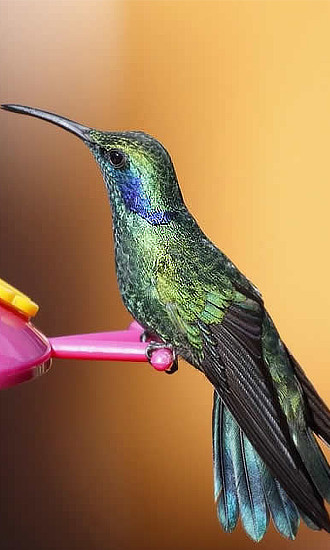 |
|
Ruby-throated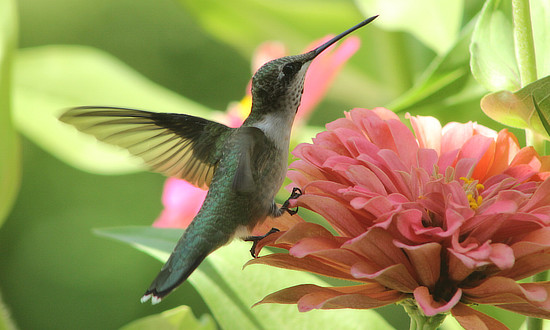 |
Buff-bellied |
Beryline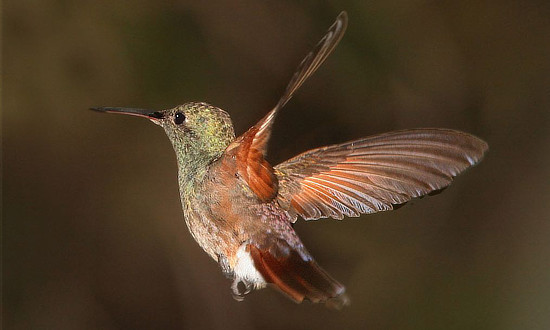 |
|
Rivoli's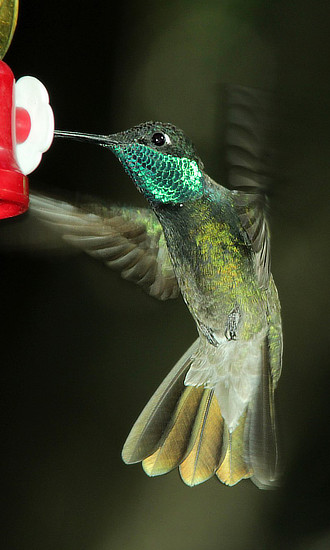 |
White-eared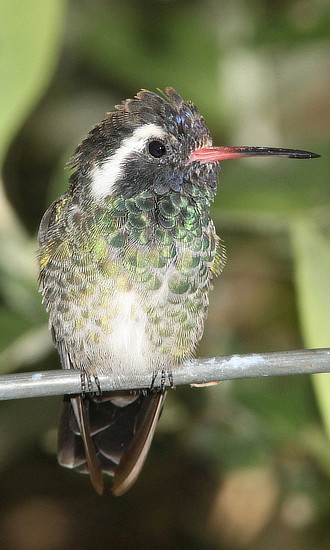 |
Plain-capped Starthroat |
|
Purple-crowned Fairy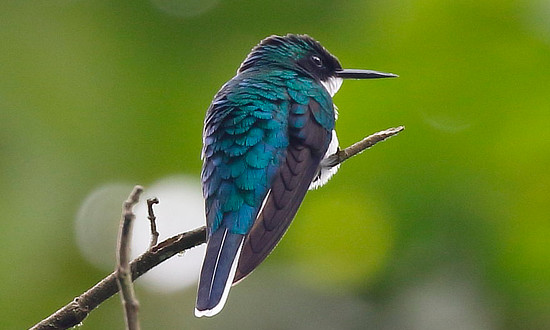 |
Long-billed Hermit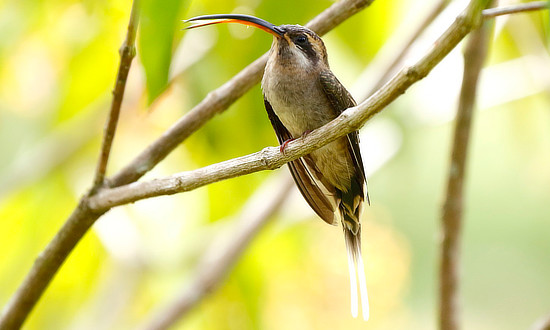 |
Purple-throated Mountain-gem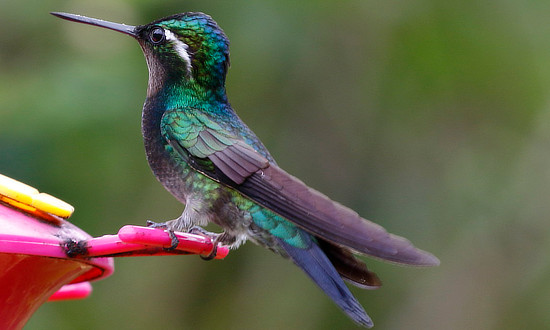 |
|
Long-tailed Sylph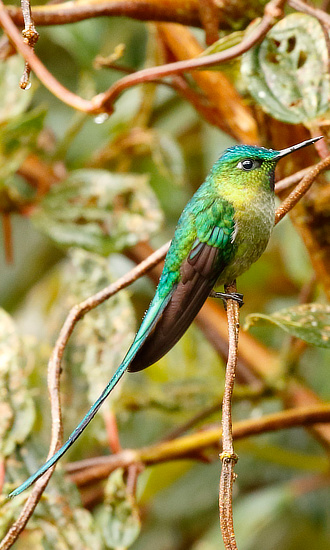 |
Purple-billed Whitetip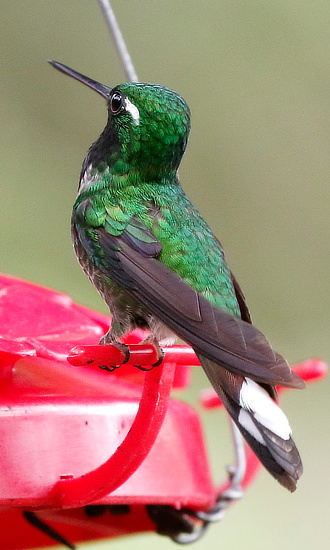 |
Violet-crowned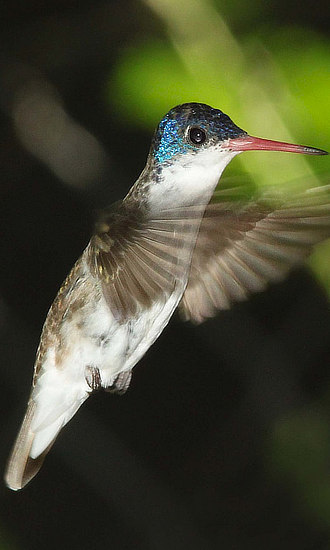 |
|
Stripe-throated Hermit |
White-bellied Mountain Gem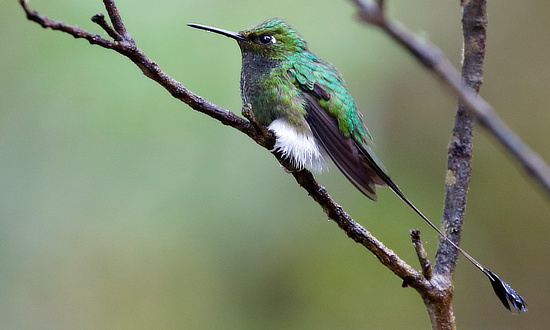 |
White-throated Mountain Gem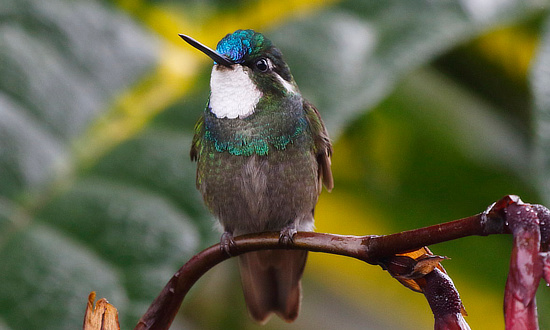 |
|
Lucifer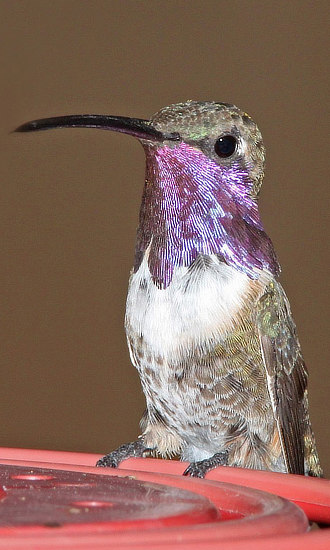 |
Allen's |
Anna's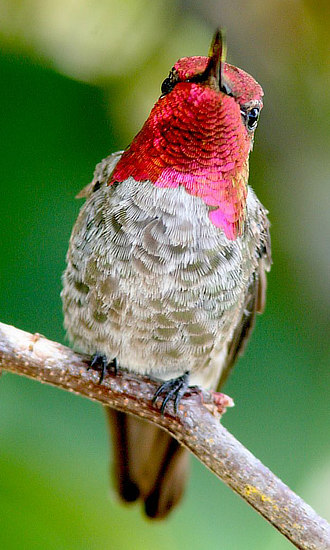 |
|
Calliope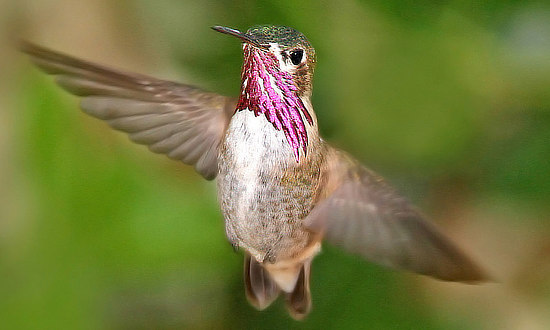 |
Costa's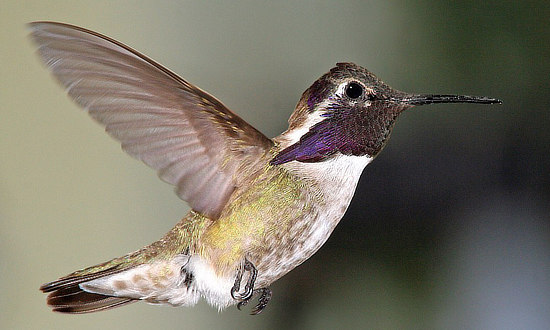 |
Broad-tailed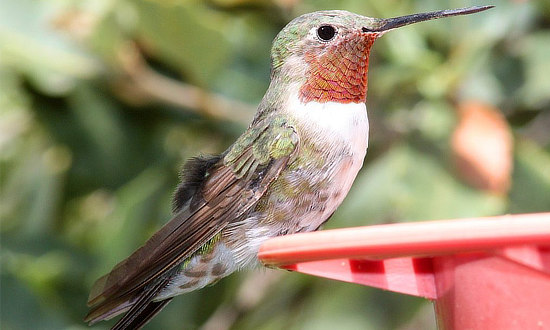 |
|
Rufous-tailed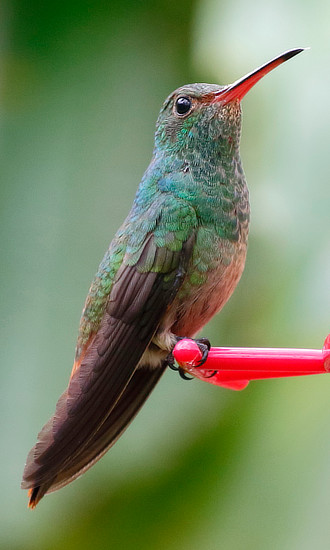 |
Broad-billed |
Green-crowned Brilliant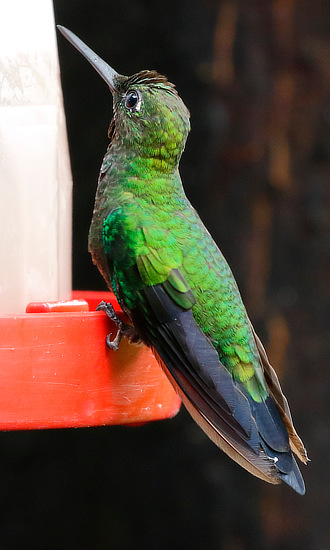 |
|
| Special thanks go out to the great nature photographers Alan Schmierer and Rolf Riethof for sharing many of their beautiful public-domain photographs of hummingbirds on this website via Flickr. | |||
Hummingbird Species in South American Countries
| Country | Number of Species | Read More |
| Colombia | 165 | Hummingbirds of Colombia |
| Ecuador | 132 | Hummingbirds of Ecuador |
| Peru | 124 | Hummingbirds of Peru |
| Venezuela | 100 | Hummingbirds of Venezula |
| Bolivia | 83 | Hummingbirds of Bolivia |
| Brazil | 81 | Hummingbirds of Brazil |
| Guyana | 39 | |
| Argentina | 36 | |
| Suriname | 35 | |
| French Guyana | 32 | |
| Paraguay | 20 | |
| Chile | 10 | |
| Uruguay | 6 |
Hummingbird Species in South America Listed by Country
Included below is a list of 290 hummingbird species in South America, in alphabetical order. Checkmarks indicate which species are found in each South American country.
Click the image below for a complete list of species in PDF format. Or click here to view the species list (PDF)
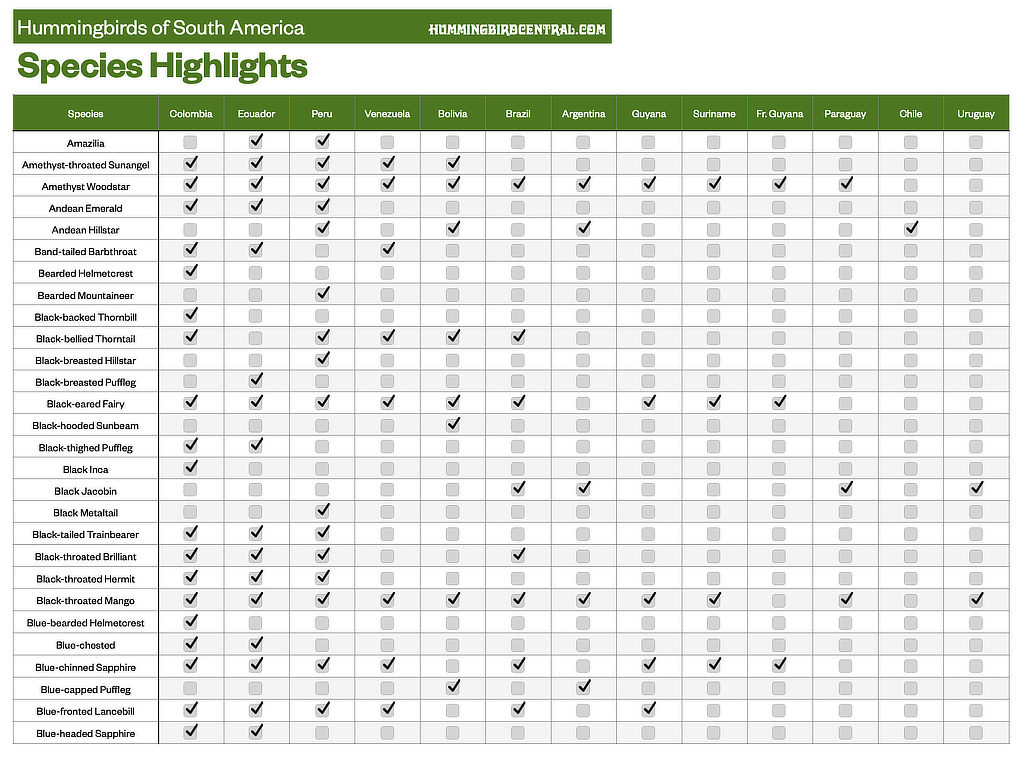 |
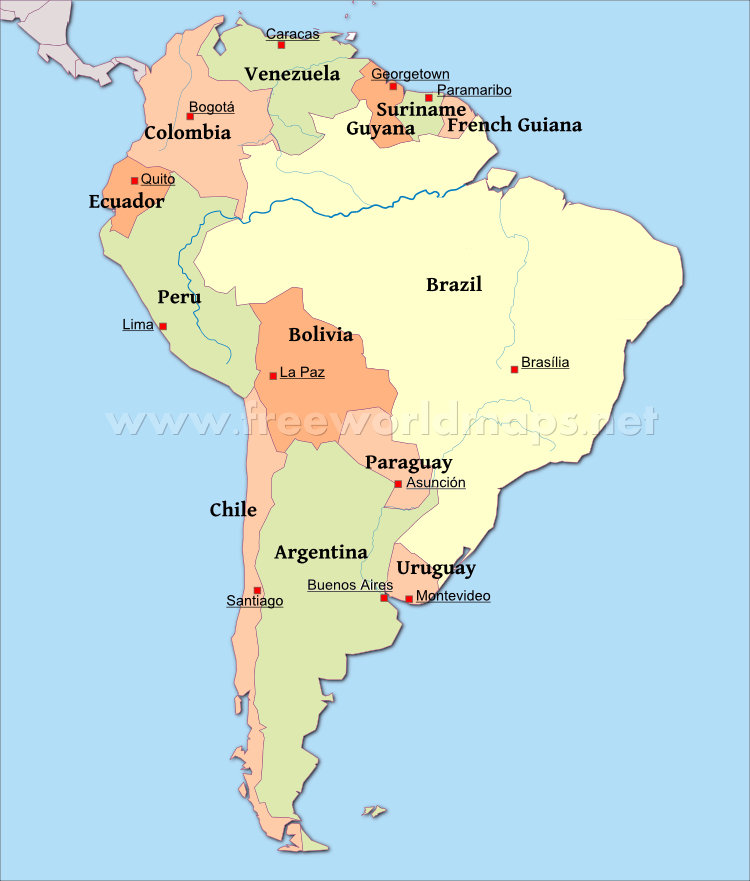 |
What Are Some of the Hummingbirds Found in South America?
Long-tailed Sylph |
Purple-billed Whitetip |
Rufous-tailed |
|
Booted-racket Tail |
Buff-tailed Coronet |
Long-billed Starthroat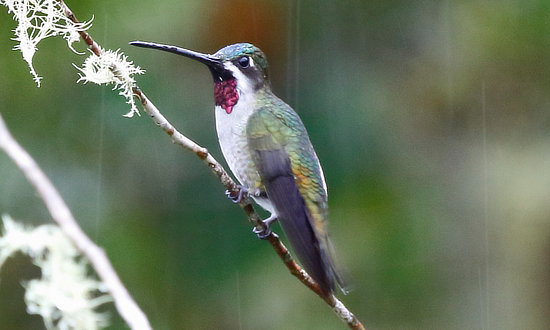 |
|
White-necked Jacobin |
Sword-billed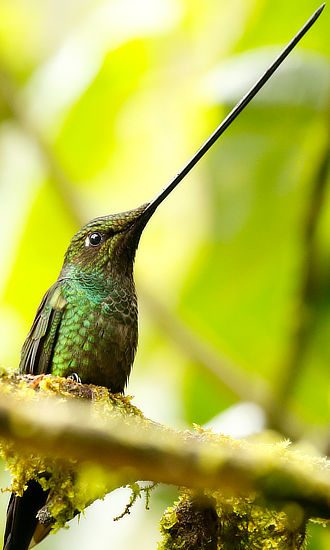 |
Green-crowned Brilliant |
|
White-bellied Woodstar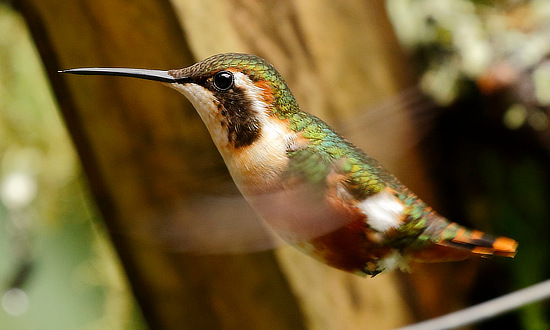 |
Velvet-purple Coronet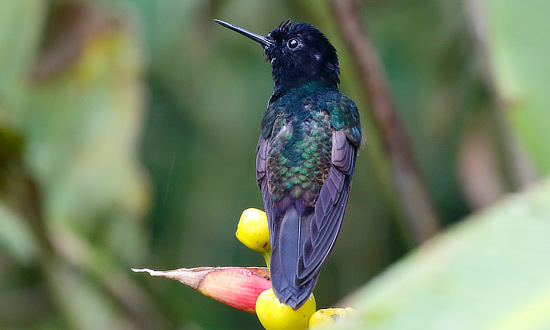 |
Tourmaline Sunangel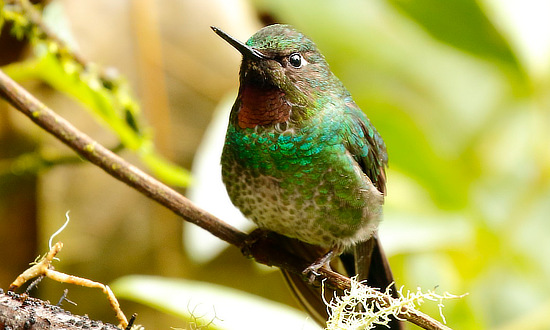 |
|
Shining Sunbeam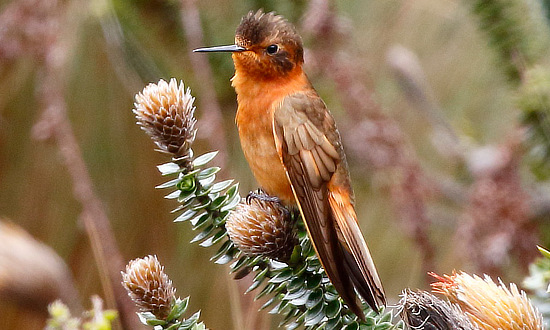 |
|||
Buff-winged Starfrontlet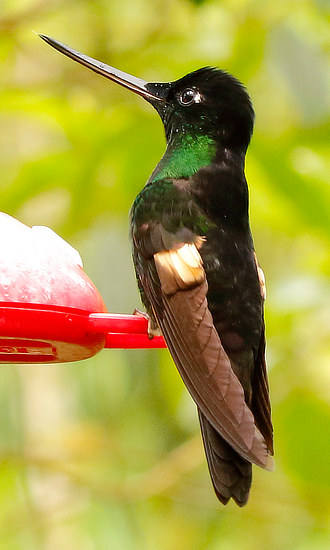 |
Speckled Hummingbird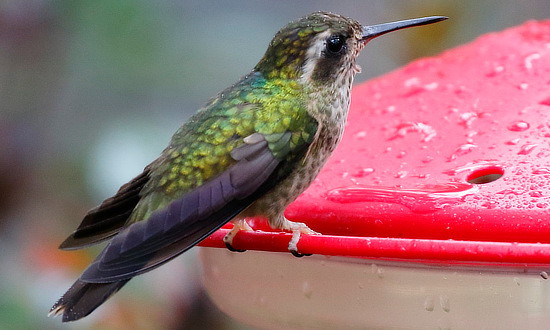 |
Collared Inca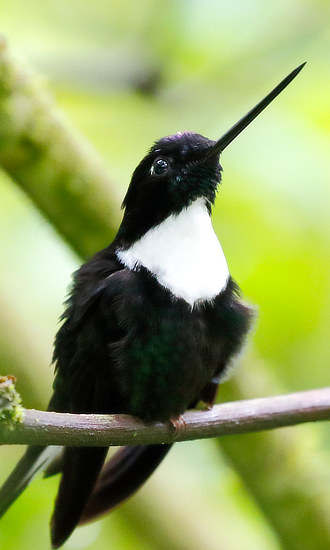 |
|
Hummingbird Species Found in the Islands of the Caribbean Sea
The islands of the Caribbean Sea are also home to many species of hummingbirds, some listed below. Hummingbirds are found on numerous islands, such as Jamaica, Cuba, Tobago, St. Lucia, Puerto Rico, Aruba, Barbados and others. Trinidad alone has upwards of 19 species!
|
|
The Hummingbird Diet
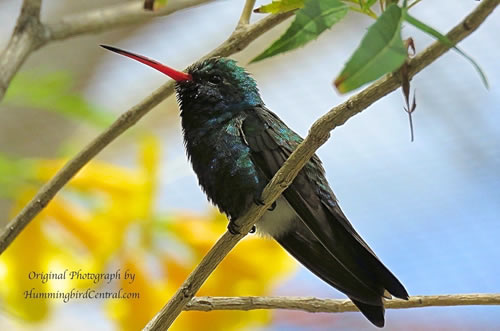 Broad-billed Hummingbird (Photo courtesy of the author) |
Their diet consists of nectar from flowers (red is the favorite color), small insects such as aphids and spiders, and sometimes even pollen and sap.
Hummingbirds feed in many small meals, consuming small invertebrates and up to twelve times their own body weight in nectar each day.
Many plant species rely on hummingbirds for pollination and provide nectar and tiny insects in exchange. Hummingbirds staunchly and aggressively defend a feeding area, or feeder, even when not feeding.
Flying ... and Walking
The beat of their wings is so rapid, up to 55 times a second, that a "humming" sound is produced, and the wings appear blurred. They are the only bird species that can hover, and fly backwards, or even upside down. The ability to hover allows the hummingbirds to sip the nectar of plants and flowers.
A hummingbird can't walk or hop, but can shuffle with its extremely short legs, which are not very strong.
Research indicates a hummingbird can travel as much as 23 miles in one day. However, during migration as they cross the Gulf of Mexico they may cover up to 500 miles at a time. Their average speed in direct flight is in the range of 20-30mph, and up to three times that fast during courtship dives.
Resting
Hummingbirds have the ability to go into a deep resting period, called "torpor", in which their respiration and heart rate become very slow. This can happen in cold weather, and the metabolic rate can drop to 1/5 of normal.
Talking and Communicating
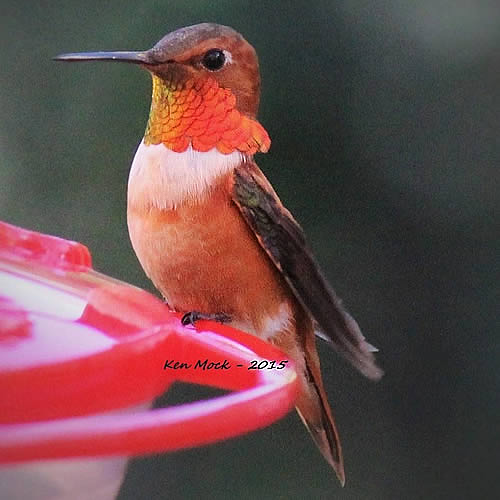 Rufous Hummingbird |
Hummingbirds have a variety of calls, chips, chatters and squeals to communicate with each other. Each species has its own "language" to alert other hummers or to challenge "invaders" of their feeding territories.
Life Expectancy of Hummingbirds
Hummingbirds, like all wildlife, can be victims of natural as well as man-made hazards.
Young hummingbirds must deal with rain, hail, cold weather, wind, snakes, squirrels, cats, dogs, ants and larger birds. And hummers have to navigate around houses, telephone poles, glass windows and buildings.
Plus, other man-made obstacles such as ecosystem destruction and the use of pesticides have a negative impact on hummingbird populations.
Hummingbirds migrate in the spring, and again in the fall. Migration is always a challenge for hummingbirds, who must fly huge distances to live in an environment that is warm and has a plentiful food supply. Strong head winds, hurricanes, and cold fronts are difficult to fly through.
The average life span of a Ruby-Throated hummingbird is estimated by experts to be 3 - 5 years. Most deaths occur in the first year of life. The record age of a banded Ruby-Throated hummingbird is 6 years, 11 months.
Mating and Pairing
Hummingbirds do not "pair up" as do many birds, but instead the male and female go their own way after mating is complete. The male will move on to other females. The female is left with the job of building the nest, incubating the eggs and raising the young birds.
White Hummingbirds
Although somewhat rare in nature, there are indeed white hummingbirds! There are three types, a true Albino, and a Leucistic hummingbird ... and a mixture, known as Pied (or Piebald).
An albino hummingbird features white feathers along with pink eyes, bill and feet. These hummingbirds are very rare, and are the result of a genetic mutation that stops the creation of any dark pigment.
Read about Albino and white Leucistic Hummingbirds.
Hummingbird Nests and Eggs
A hummingbird's nest is very small, usually about 1.5" in diameter. Eggs are likewise small, less than 1" long, about the size of a jelly bean.
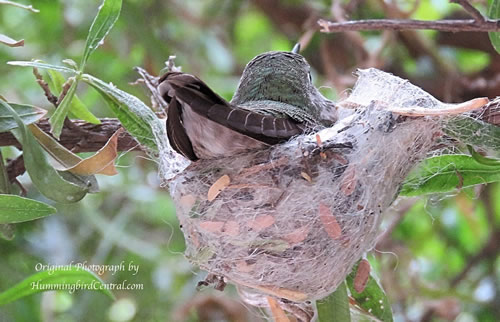 Hummingbird on nest (Photo courtesy of the author) |
The female lays her eggs on different days. The Ruby-Throated Hummingbird lays 2 eggs. Black-chinned Hummingbird, Anna's Hummingbird, Costa's Hummingbird, Calliope Hummingbird, Broad-tailed Hummingbird, Rufous Hummingbird and Allen's Hummingbird all lay 1-3 eggs. Gestation period is about 16-18 days.
Hummingbird Populations in the United States and Canada
The most common species is the Ruby-throated, with an estimated population of 34,000,000. There are an estimated 19,000,000 Rufous Hummingbirds, and 8,200,000 Anna's. Read more about hummingbird populations
Hummingbird Organizations & Resources
- International Ornithologists' Union (IOU)
- List of All 366 Hummingbird Species at WikiPedia
- Hummingbird Society
- American Bird Conservancy
- American Birding Association
- American Ornithological Society
- Cornell Lab of Ornithology
- Journey North
- Southeastern Avian Research
- USGS Bird Banding Laboratory (BBL)
- National Audubon Society








